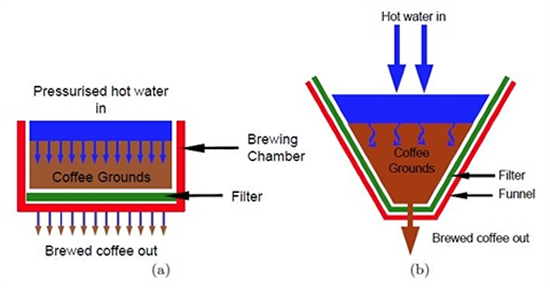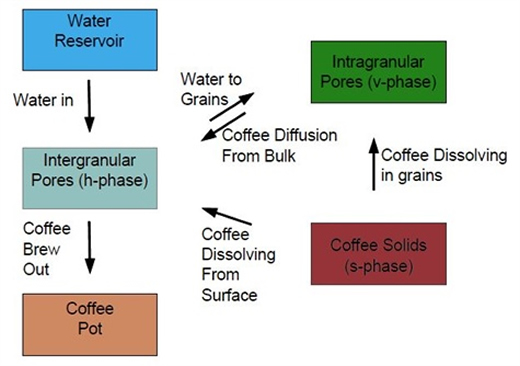Wake up and ‘science’ the coffee
How do you take your coffee? With over 55 million cups drunk each day in the UK, it comes as no surprise that mathematicians have begun to investigate just how to create the ‘perfect’ cup. While past research has investigated the maths behind coffee extraction, a study published in the SIAM Journal on Applied Mathematics shifts the focus to drip filter machines.
Kevin M. Moroney, William T. Lee, Stephen B.G. O’Brien, Freek Suijver and Johan Marra have presented and analysed a new multi-scale model of coffee extraction from a coffee bed.
According to Moroney, previous models of coffee extraction had not been validated with experiments. “In comparison, our model describes flow and extraction in a coffee bed, specifies extraction mechanisms in terms of the coffee grain properties, and compares the model’s performance with experiment. Our initial focus on the flow-through cylindrical brewing chamber allowed us to consider the model in one spatial coordinate and ensure that the model assumption of a static bed was valid.”

(a) Espresso coffee is made by forcing hot water under high pressure through a compacted bed of finely ground coffee.
(b) Drip filter brewing involves pouring hot water over a loose bed of coarser coffee in a filter. In either method water flows through the bed, leaching soluble coffee components from the grains. Any undissolved solids in the fluid are filtered from the extract as the liquid leaves the filter.
Seeing as a cup of coffee is composed of over 1,800 chemical components, the scientists had to simplify the extraction model by using ‘nondimensionalisation’. This reduced the amount of possible variables, for example brew ratio, brewing time and water quality, and ultimately enabled the authors to recognise the equations’ dominant terms before they begin actively seeking solutions. “Neglecting smaller terms thus allows us to find approximate solutions,” said O’Brien.

Transfers included in the coffee extraction model
According to Dr Lee: “What makes the best coffee is hideously complicated – from the shape of the filter, to the scale of a single grain, to the flow rate of water and which machine or tool is used, there are an enormous number of variables”.
The initial results suggest that the size of a coffee grain is among the most important when it comes to brewing the ideal cup. One of the conclusions can be boiled down to a simple rule: If the coffee tastes too watery, grind the beans more finely. If it tastes too bitter, go with a coarser grind.
If you are unable, or unwilling, to acquire a different size of coffee grain, another factor to consider is the optimal brewing temperature range of 91-94°C.
The next challenge for the team to consider is the effect of different drip methods. It is clear that coffee is a complex art form… cup of tea, anyone?


